Understanding the East European Shepherd
The East European Shepherd (EES) is a large, robust breed originally developed in the Soviet Union to withstand harsh climates and serve as a working dog. Here’s a breakdown of their traits, needs, and history:
Adaptability
- Apartment Living: Can adapt with regular exercise and mental stimulation, but a yard is ideal.
- New Owners: Good choice due to their intelligence and eagerness to please.
- Tolerating Being Alone: Prone to separation anxiety. Needs companionship and mental stimulation.
- Weather Tolerance: Well-suited for cold climates and can handle hot weather with some care.
Friendliness
- Family: Devoted and affectionate.
- Kids: Can be good with children, but needs socialization and supervision due to size.
- Strangers: Naturally reserved, but can be socialized to be friendly.
- Other Dogs: May show dominance, early socialization is key.
Health & Grooming
- Shedding: Moderate year-round, requires regular brushing.
- Drooling: Can be drool prone.
- General Health: Prone to common issues like hip dysplasia. Regular vet checkups are important.
- Weight Gain: Can gain weight easily, needs a controlled diet and ample exercise.
- Grooming: Relatively easy, requires regular brushing and occasional bathing.
Trainability
- Easy to Train: Highly intelligent and eager to learn.
- Minimal Barking: Barks rarely, but could bark out of anxiety if not properly trained.
- Mouthiness: Some tendency to nip; can be managed with training.
- Chasing: May chase if feeling threatened; obedience training helps control this instinct.
History
- Origins: Developed in Russia in the 20th century for military and working roles.
- Purpose: Bred for cold-weather resilience, intelligence, and loyalty.
- Parent Breeds: German Shepherd mixed with various native Russian breeds.
Appearance
- Large, athletic build with strong muscles.
- Dense coat, often black but can have other colors.
- Slightly rounded ears and expressive eyes.
FAQs
- Difference from German Shepherd: EES is larger and bulkier.
- Rarity: Still relatively rare in the US.
- Parent Breeds: German Shepherd crossed with Russian Laikas and Shepherd dogs.
- Cost: Typically costs $900-$1200.
- Lifespan: 10-14 years on average.
Key Takeaways
- The East European Shepherd is a loyal, intelligent, and protective breed.
- They require regular exercise, mental stimulation, and companionship.
- Early socialization and training are essential for a well-rounded EES.
- Their thick coat makes them well-suited to cold climates.
- If you’re seeking a large, devoted, and trainable companion, the East European Shepherd may be the right dog for you.
Adaptability
Adapt well to apartment lifestyle (Rate: 3.5 out of 5)
These german shepherd dogs are one of the best dog breeds which can adjust well to an apartment-style lifestyle. Although the dogs are naturally not adaptable to small and narrow spaces
Their calm nature and affection towards their owners make them adjust according to their owner’s style of living, a home with a yard will suit the best for this eastern European shepherd breed.
Now the fact to notice here is that the dog owners of this eastern European shepherd breed should make available all the necessary things like playing toys, a crate for limiting the dog’s movement needs, and many others to keep the canine comfortable in the apartments.
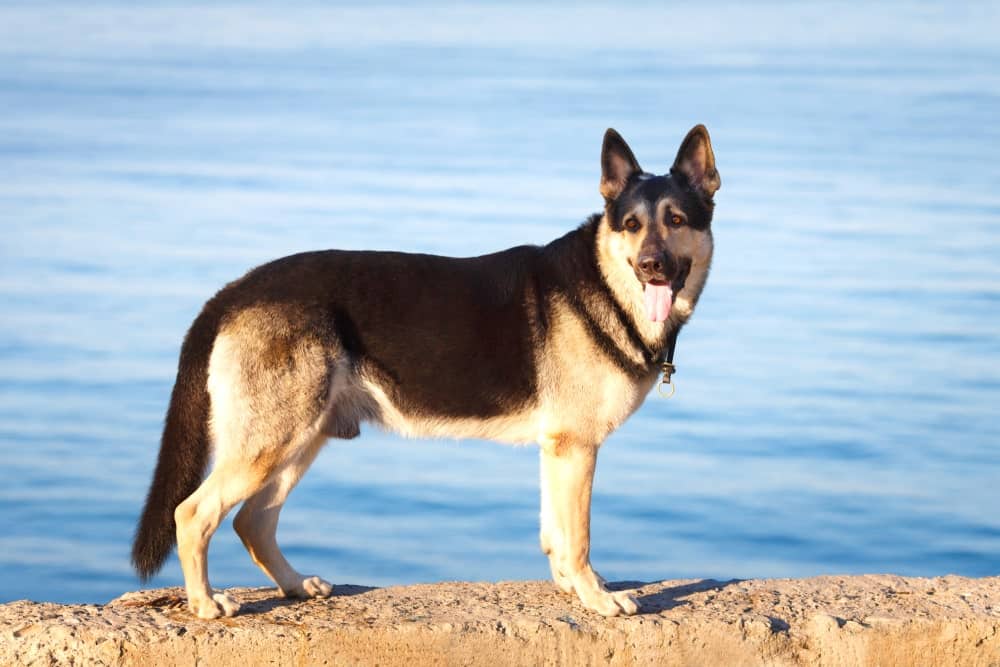
Good for the novice owners (Rate: 4 out of 5)
Eastern European shepherds are considered to be one of the best choices for novice owners, mainly for their easygoing personality and their temperament.
The dogs are highly intelligent as compared to other breeds, which makes them grab new skills rapidly, for which the owner doesn’t have to repeat the process for a longer time.
These large east european shepherd breed usually remains more attached to their owner, due to which they always try their best to satisfy the owner in all aspects, which makes them perform all the tasks with utmost dedication than most other pets. Thus they are considered good for novice owners.
Can not tolerate being alone (Rate: 2.5 out of 5)
These eastern European shepherds are those dogs that always need some companion by their side for mental stimulation. The dog is habitual of being surrounded by people all the time, due to which they mostly turn aggressive when left alone.
Keeping this central Asian shepherd at home can lead to a great loss of the dog owner because eastern European shepherds can easily turn destructive when kept alone at home as they are overly friendly with their owner.
Keeping necessary things like food and toys can make them control for a limited period, but eventually, it will lead to the loss of the owner; thus, it is preferred to use a crate or take the canine along when going traveling.
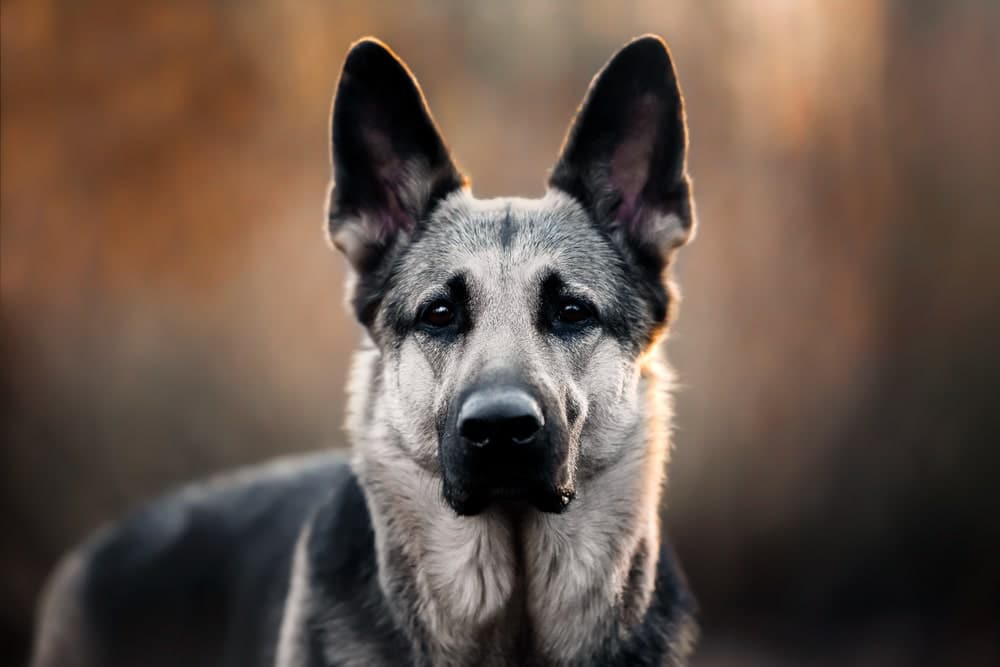
Can tolerate cold weather (Rate: 3.5 out of 5)
It was already mentioned above that eastern European shepherds are mainly created to make a dog breed that is more cold weather tolerant than the other dogs. The dog can easily adapt to colder climates without suffering from any health problems, mainly because of its well-developed undercoat.
This large dog with a thick coat with dense fur over it can adapt well to cold climates as the temperature outside can’t affect the dog’s health.
This breed is even known for adapting well to freezing temperatures, which is the unique fact of this breed that attracts most dog owners’ attention towards it.
Can tolerate hot weather (Rate: 3 out of 5)
This eastern European shepherd breed type can adapt to even hot weather like many other dogs. This dog breed initially called the east European shepherd, usually doesn’t sweat on their for regulation of the amount of heat absorbed in their body. Thus they will need the help of their owner to survive during the hot weather without getting health issues.
With a bit of help from the owner, like being in a cold region and going for a walking session during the noon time when the sun gets deemed, can make the canine perform well in hot weather.
All around friendliness
Affectionate with the family members (Rate: 3.5 out of 5)
This European shepherd dog breed type is significantly larger than the other medium-length dogs and is very affectionate towards the family members of the owner.
These dogs from eastern Europe used to be on the side of their owner all the time because they are habitual of being around a companion for being stress-free,
The obedience training of this canine can even make its performance better and can make him register as one of the best working dogs.
Being affectionate with their owner’s east European shepherds are also protective, which makes them do anything for the sake of the owner’s safety when they are in danger.
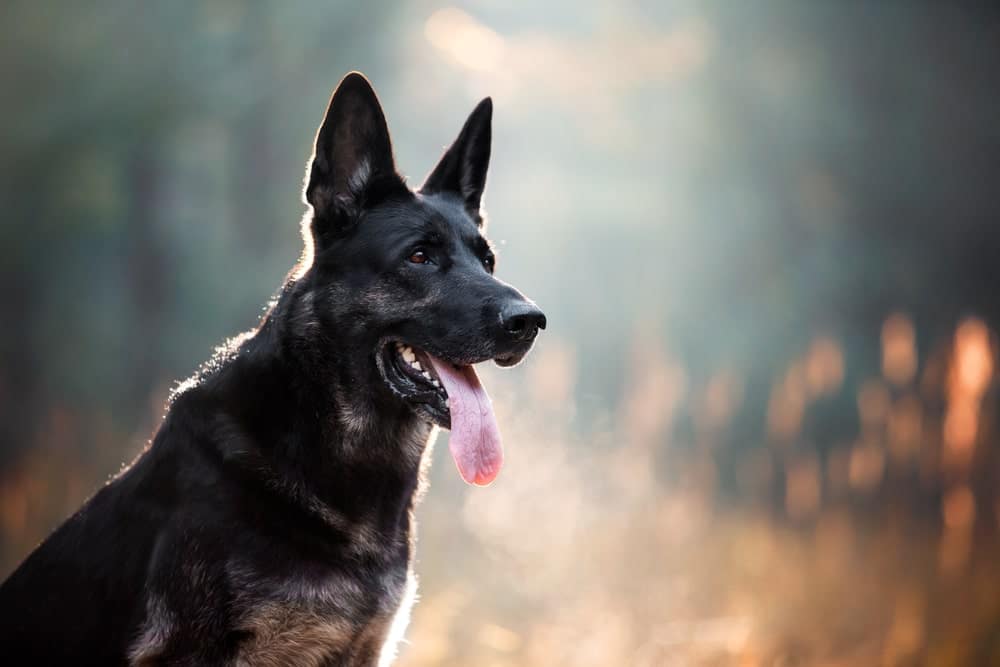
Affectionate with the kids (Rate: 4.5 out of 5)
East European shepherds usually don’t possess a nature of being friendly with kids; it can be done with the obedience training of the canine.
To make the canine highly trainable regarding this matter, the dog owner can simply go for making it a habit for the canine from a young age to live with kids.
These dogs are self-assured and have a nature of being friendly with the persons they are living with from a very young age.
So it depends mostly on the owner of the canine, how they will behave with the kids in the house, because if the owner makes them habitual of being with kids, then definitely the canine will be affectionate with the kids.
Friendly with strangers (Rate: 3.5 out of 5)
As per research, only highly trainable European shepherds will be friendly with strangers. It has already been mentioned above that the canines are friendly with only those whose owner makes them habitual.
The dogs have a unique temperament that doesn’t let them be friendly with unknown persons. Thus, to make the dog well socialized and to make him learn to be friendly with strangers, the owner has to go for giving the canine daily walking sessions.

Moderately friendly with other dogs (Rate: 3 out of 5)
The European shepherd, also popular as the Vostochnoevropejskaya Ovcharka, is not so friendly with other dogs. This is mainly because the dogs are not so comfortable sharing their owner’s moments with other dogs.
The other most significant reason behind the dog being not friendly with other dogs is maybe they get an effect of threatening from the dogs.
To make the canine-friendly with other breeds, the owner has to simply go for making the pet habitual of being friendly with the other canines by scheduling playing sessions with other dogs from their neighbors.
Health and grooming requirements of the east European shepherd
Amount of shedding (Rate: 3 out of 5)
The European shepherd is one of those dog breeds which constantly sheds irrespective of the season’s change. This dog has a quite hairy coat which sheds most of the time to limit the amount of hair over the coat,
Thus, if dog owners have been searching for a dog that can maintain a clean environment in the house, then this might not be the best choice for such an owner.
Now the fact to notice here is that with regular grooming schedules and proper cleaning of the canine’s coat, the shedding of the canine’s coat can get controlled.
Thus. in short, it can be said that the dog owners of the European shepherd have to put some more effort into the canine’s good appearance and clean environment.
Drooling potential (Rate: 3 out of 5)
The drooling potential of this European shepherd is comparatively higher than that of other dog breeds.
So it is clear to all of us that it is not a low-maintenance breed; the salivary gland of this European shepherd gets overstimulated whenever the canine gets bursts out of different emotions, which leads to excessive drooling.
So, if you are a dog owner who doesn’t like unnecessary drooling spots here and there on the couches and pillow covers of your home, then this breed might not be a great choice for you.
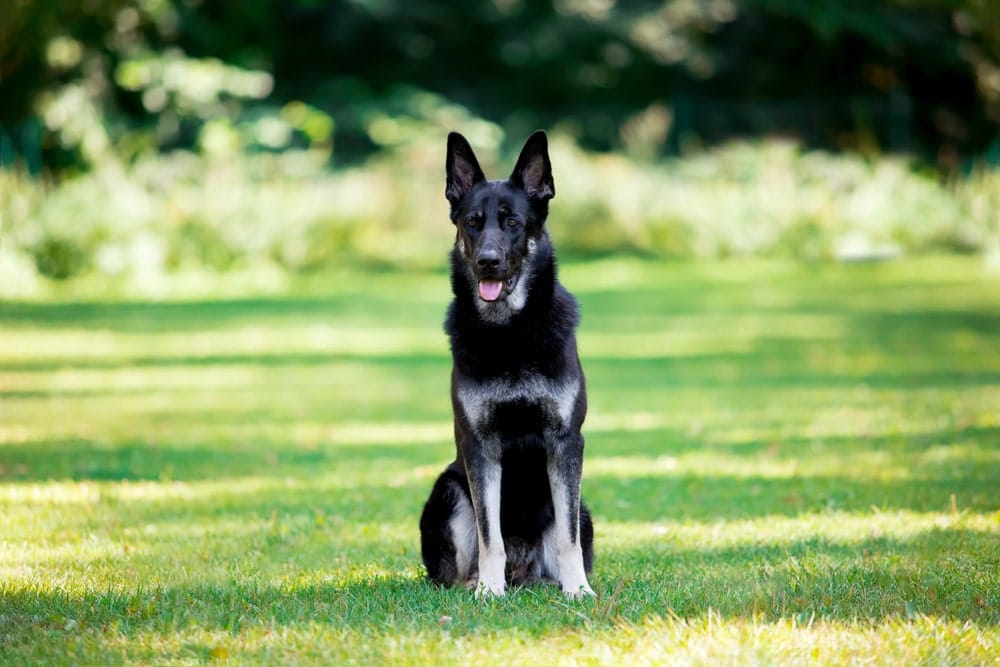
General Health (Rate: 3.5 out of 5)
The European shepherd breed hasn’t inherited any kind of special diseases from its parent dog breeds.
This dog breed generally used to suffer from some basic diseases that most canines suffer through during their life which include elbow dysplasia, hip dysplasia, sexual dimorphism, joint pains, and many others.
Diseases like elbow dysplasia, if they remain untreated for a longer time, then can turn deadly for the canine. Thus to maintain the good health of the canine, it needs to be treated rapidly once detected
Easy to groom (Rate: 3 out of 5)
Yes, the european shepherd is one of those dog breeds which are relatively easy to groom. This dog breed has a slightly longer coat with soft furs upon it, which are relatively easy to groom.
A slight glide of the scissor, in short, a light scissors bite over the hairs of the canine, can trim its length and can give the canine a good appearance.
Now the fact to notice here is that the grooming requirements of the canine should also include proper needy factors like shampoo as per the ph level of the canine’s skin and moisturizers too for keeping the skin hydrated.
Effective weight gainer (Rate: 4 out of 5)
This european shepherd breed is known to be an effective weight gainer when loses control over its diet.
Weight gain in this breed can also be due to some other kind of disease.
Thus the dog owners should go with the veterinarian check-up first to identify if the reason for the weight gain is any fatal disease or not.
In case there is no serious issue behind the weight gain of this dog breed, then the owner can simply go about reducing the amount of food consumption and going with the appropriate proportion as per the nutrient requirement of the body of the canine.
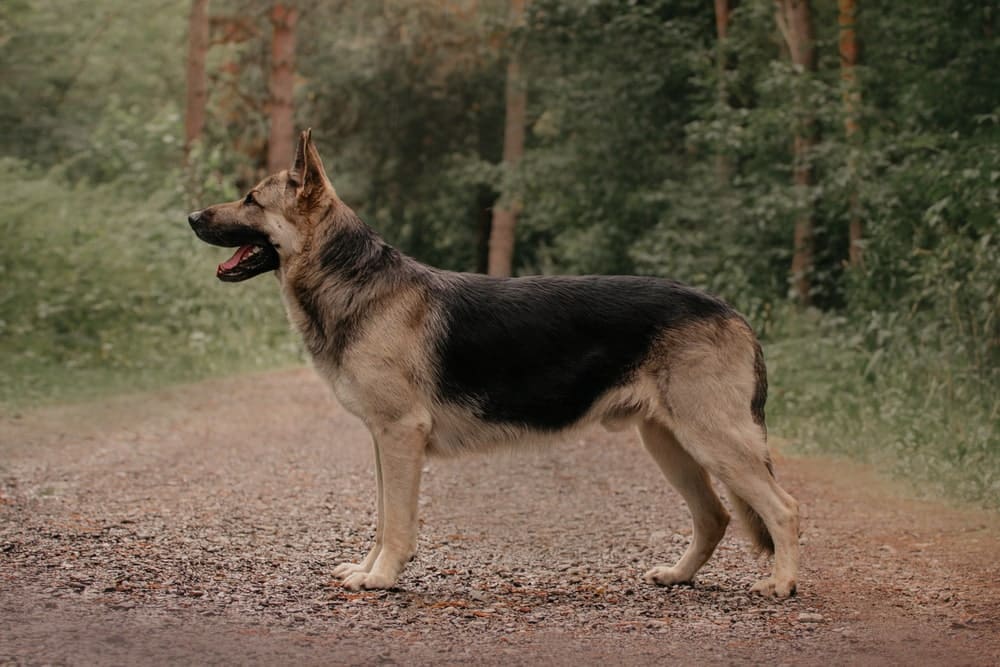
Trainability
Easy to train (Rate: 4 out of 5)
European shepherds are one of those dog breeds which are considered to be very easy to train as compared to most of the other dog breeds. Sometimes the easy to go with behavior of the canine matters the most during the training procedures as it leads to no repetition of the process as the canine will try its best to grab one thing rapidly.
Even the puppies of this breed remain so understanding during the training process and cooperative that the owner doesn’t face difficulties while training the puppies of this breed.
Barks rarely (Rate: 3 out of 5)
The european shepherd is one of those dog breeds recognized by the continental kennel club that barks in almost rare conditions.
The dog is so calm and kind that it always tries on its own to handle its anxiety on its own to be stress-free and stop itself from barking.
Now, in some cases, the dog might also require some proper training from the owner to control him when he gets anxious.
This can include proper leash behaviors, crate training, and many others, which can be helpful for the canine to relieve its stress.
Potential for mouthiness (Rate: 3 out of 5)
The eastern european shepherd, just like most of the other working dogs, has a habit of biting each of the things they get by their side, especially when it smells good. Not just for this dog this behavior is common in almost all canines.
Now, this is the only behavior that can be troublesome for the owner of the canine as its potential to mouthiness might lead to destroying many of the household chores.
It can be simply controlled by making the canine habitual with certain commands which signify stopping of its activities like “stop,” “no,” and many others.
Tendency to chase (Rate: 2.5 out of 5)
This dog breed usually doesn’t chase other dog breeds or strangers until they get some threatening symptoms from the person in front of them.
They only tend to chase someone when getting aggressive; thus, if the canine of this European shepherd is chasing someone, then it’s the fault of the victim, whereas this behavior can also be stopped by showing some love and care to the canine.

Breed history of the east European shepherd
This eastern European shepherd dog breed was mainly created in the soviet countries during the early twentieth century.
The main motive of the breeders behind creating this dog breed is to complete the program launch for creating a dog breed that can adapt well to the freezing temperatures of the Ukrainian SSR.
We can simply get an idea of for what purpose the dog is being used in those days by its german shepherd appearance. It was mainly bred for the Russian army which needs such dogs as a companion to complete tasks in the freezing temperatures of Russia.
To create this breed, the breeders started to cross the german shepherds with the native Russian Breeds. Such as the East Siberian Laika with the Caucasian Shepherd and the Central Asian Shepherd.
The USSR Ministry of Agriculture and Cynologic council have registered the breed standards of this dog in their dog registry as one of the best breeds among all the other dogs.
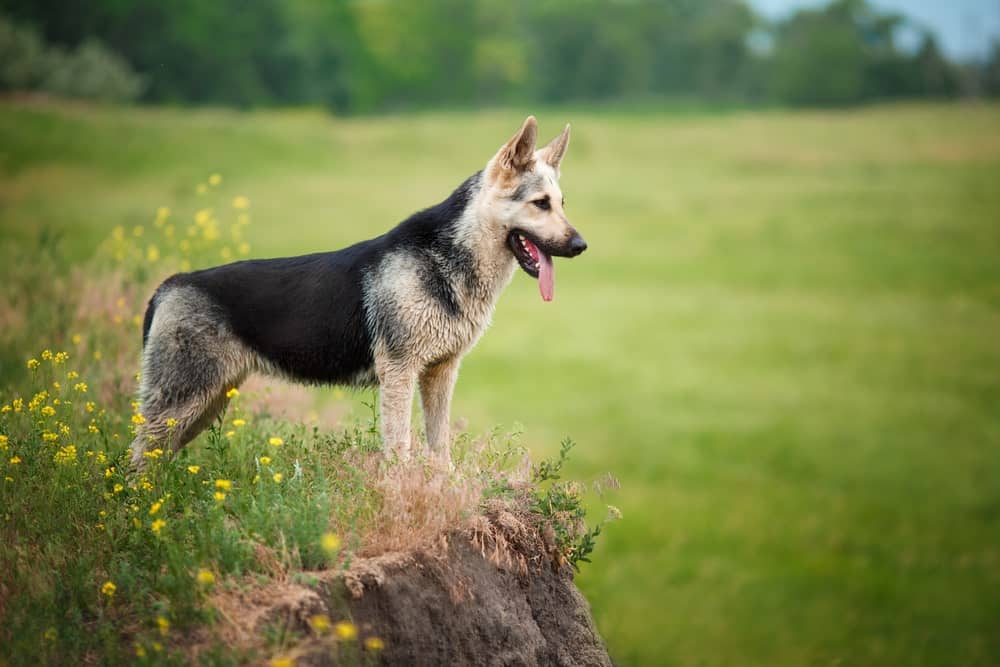
The appearance of the east European shepherd
The east European shepherd is mainly in trend because of its unique appearance. The dog has a long structured body with heavy muscles and slightly rounded ears with large brown eyes.
The dense coat of the canine with a soft undercoat helps the canine to tolerate the freezing temperatures of different sites.
This dog breed is mostly available in solid black color and also has a slightly rounded forehead with a large set of teeth.
This dog breed might have brown and amber color eyes, whereas the color of the coat can be Black, Brown, Blue, White, and Sable.
The well-padded and oval-shaped feet of the canine is one of the strongest body parts, which makes them run very faster. Now, the fact to notice here is that this bossy appearance of the canine can only be maintained when the owner of the canine takes proper care of it.
This can be simply done by adopting proper grooming schedules and cleaning the canine with proper requirements as per the vet’s prescription according to the canine’s skin type.
FAQ’s
1. What is the unique difference between the german shepherd and the Eastern European shepherd?
The eastern European shepherds are larger and have quite heavier bodies than the german shepherd.
Most of the time, people get confused because they are the same in appearance. The European shepherd will be well-muscled and will have slightly arched ears.
2. Are East European Shepherds one of the rarest species?
This European shepherd is one of the most popular breeds among all the other dog breeds in the Soviet military. But this is still one of the rarest species in the United States and the Soviet military.
3. What is the mixture of the parent dogs of the European shepherd?
The European shepherd is a mixture of the dog breeds molasses and other local northern breeds, which is the most significant region behind its unique appearance.
4. What is the price of an east European shepherd?
If you are planning to adopt an east European shepherd, then it will cost you around $ 900 to USD $ 1200. But the charges of adopting an east European shepherd may also differ depending on the place where you are buying the canine.
5. What is the average lifespan of an east European shepherd?
The average lifespan of an east European shepherd is around ten to fourteen years. But this might also differ depending upon the lifestyle of the canine and its immunity level.

